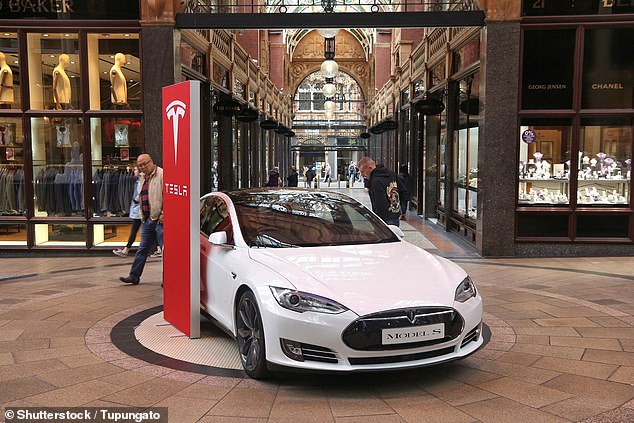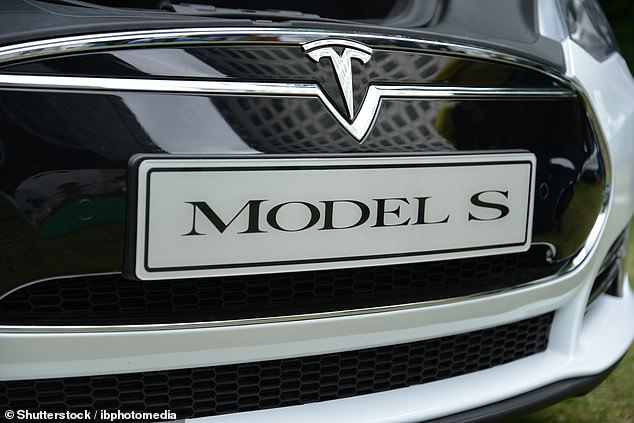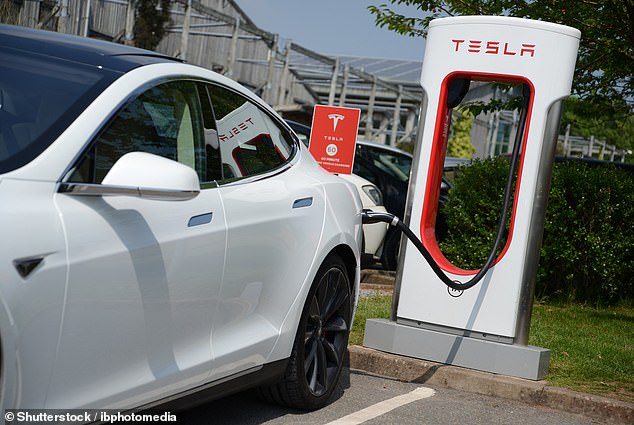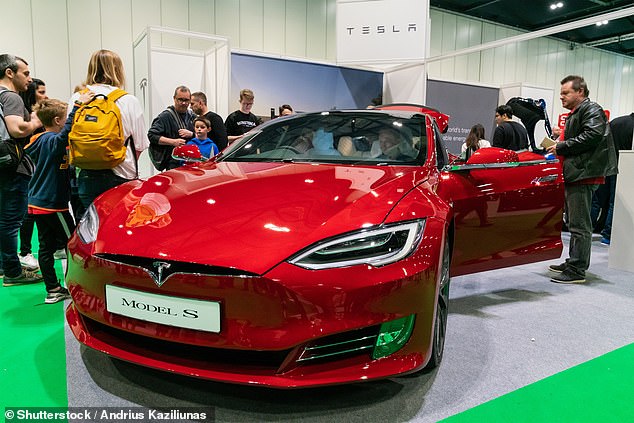Is one of your big concerns about switching to an electric car based on fears the batteries need to be replaced after a short amount of time as a result of degradation and at an astronomical cost?
If so, it might put your mind at ease to know there are 309 Teslas currently in use in Britain with more than 200,000 miles on the clock – and more than 5,300 have covered in excess of 100,000.
But this pales in comparison to what’s believed to be the highest-mileage example in Britain.

Worried about the longevity of EV batteries? There are Teslas on the road in the UK that have accumulated incredibly high mileage
Official figures held by the Driver and Vehicle Standards Agency (DVSA) shows there’s a Model S that’s being driven around with almost 700,000 on its odometer.
This is based on mileage data recorded at the time of MOTs.
The UK-registered Tesla, which has clocked 697,744 miles at its last annual check-up, has already covered the equivalent of theoretically driving around the world 28 times, says LeaseLoco, which analysed the DVSA stats.

The highest-mileage UK-registered Tesla is a Model S that’s clocked 697,744 miles. That’s the equivalent of theoretically driving around the world 28 times
This is Money believes the high-mileage Model S is likely a taxi or private hire vehicle used for airport runs, which explains its monumental use.
It’s a remarkable achievement given Tesla only launched Model S – its first mainstream EV – in the UK a decade ago in the summer of 2014.
The car leasing website says there are five Model S Teslas on UK roads that have clocked more than half a million miles.
The second most-used Tesla – another Model S – has 564,860 miles on the clock, DVSA records suggest.
On a single charge, the latest version of the Model S boasts a range of up to 405 miles (depending on spec), assuming no degradation over time.
Based on this range, the 700,000 Tesla owner would have charged at least 1,723 times since they purchased the car.
However, earlier variants of Model S offered closer ranges of around 285 miles, meaning a lot more connections to the grid.
What’s unclear from the DVSA records is whether any of these high-mileage Teslas have had their original batteries replaced under warranty.

Based on the Model S version with the longest range, the owner of the near-700k Tesla would have charged at least 1,723 times
The US EV giant steered by Elon Musk offers a battery and drive unit warranty for eight years or 100,000-to-150,000 miles, whichever comes first.
The warranty guarantees the battery’s capacity will be at least 70 per cent over the warranty period.
If the battery degrades more than 70 per cent within the warranty period, Tesla will replace it with a battery that meets the 70 per cent limit.
Musk tweeted back in 2019 that a Tesla battery should last for 300,000 to 500,000 miles.
If that’s true, there are 54 Teslas in the UK with between 300,000 and 500,000 miles on the clock that could be due a new battery, granted they haven’t already had the original unit replaced.
Incredibly, five Teslas have exceeded Elon’s prediction if they haven’t had a replacement battery yet.
According to DVLA figures, there were more than 194,000 Tesla owners registered to drive on UK roads in Q1 2024.
It means 0.2 per cent have more than 200k on the clock and 2.8 per cent have covered in excess of 100,000 miles.
And it’s not just Model S Teslas that have been totting up major mileage.
There are 807 Model 3s in Britain with over 100,000 on the clock and 491 Model Xs.
Incredibly, given there are fewer than 30 Tesla Roadsters registered in Britain, six of these have over 100k on the odometer, DVSA records suggest.

The Model S was the first mainstream Tesla launched in the UK back in 2014. Many are used as eco-friendly private hire, luxury taxi and airport shuttle services
‘The fact that a Tesla in the UK has clocked 700,000 miles is a testament to the durability and longevity of electric vehicles,’ John Wilmot, chief executive of LeaseLoco.
‘It’s incredible to think that, just a decade after the Model S first hit UK roads, several Teslas have surpassed half-a-million miles. This milestone shows that with proper care and maintenance, EVs can go the distance, making an electric car a smart choice for those considering a new car.’
Wilmot adds that despite the ongoing concerns about battery life, most electric car owners won’t have to worry about this until way into the future.
However, he says there are still hurdles in the way that are preventing consumers making the switch to an electric.
‘The more immediate issue is charging their EVs while on the road,’ he told us.
‘EV owners aren’t just dealing with range anxiety – the fear of running out of power without finding a charging point in time.
‘They’re also experiencing charge anxiety – the uncertainty of whether a charging station will be available and functioning when they need it.
‘If we want to see a mass transition to EVs within the next decade, these anxieties must be addressed.
‘Electric car owners need confidence that there will be enough reliable charging points to ensure they never run out of battery, and that these stations will be operational and available when they need them.’
Some links in this article may be affiliate links. If you click on them we may earn a small commission. That helps us fund This Is Money, and keep it free to use. We do not write articles to promote products. We do not allow any commercial relationship to affect our editorial independence.










